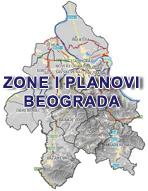IFLA INTERNATIONAL STUDENT LANDSCAPE ARCHITECTURE DESIGN COMPETITION
International Federation of Landscape Architects
IFLA INTERNATIONAL STUDENT LANDSCAPE ARCHITECTURE DESIGN COMPETITION – (Updated version)
The 51st IFLA World Congress 2014 International Student Competition to be celebrated in the City of Buenos Aires, Argentina, is sponsored by the International Federation of Landscape Architects (IFLA) and organized by the Argentine Center of Landscape Architects (CAAP). The IFLA International Student Landscape Architecture Design Competition is part of the Congress, and it promotes and encourages the evolution of the profession of landscape architecture through education.
ORGANIZING COMMITEE
Chair: Prof. Arch. EDP Vilma Budovski
Members: Prof. Arch. Martha Marengo de Tapia and Arch. EPP Virginia L. Laboranti.
Chair: Prof. Arch. EDP Vilma Budovski
Members: Prof. Arch. Martha Marengo de Tapia and Arch. EPP Virginia L. Laboranti.
AIM OF THE COMPETITION
The competition aim is to promote a reflection on the importance of “thinking and action on landscape” as a conceptual and operative tool to guide the deep and global transformations in their changes. The intention is to reconnect places to the geographic, social and cultural context that contains them, and to recover the essence of their identity and values.
It is intended that students investigate the dynamic process of landscapes in their different complexities (ethical, aesthetic, functional, ecological, socio- cultural, historic-patrimonial, economic-productive, etc.) redefining and identifying new and old spaces, applying innovative and sustainable technologies, generating formal and environmental certainties; and humanizing the places and their landscape.
The competition aim is to promote a reflection on the importance of “thinking and action on landscape” as a conceptual and operative tool to guide the deep and global transformations in their changes. The intention is to reconnect places to the geographic, social and cultural context that contains them, and to recover the essence of their identity and values.
It is intended that students investigate the dynamic process of landscapes in their different complexities (ethical, aesthetic, functional, ecological, socio- cultural, historic-patrimonial, economic-productive, etc.) redefining and identifying new and old spaces, applying innovative and sustainable technologies, generating formal and environmental certainties; and humanizing the places and their landscape.
THEME: URBAN LANDSCAPES IN EMERGENCY – Creating a landscape of places
The competition challenges students to explore urban landscapes: abandoned, obsolete and degraded landscapes; landscapes hurt by aggressive anthropic actions to nature and to the culture of the territory, landscapes substituted by new proposals and originated by needs, which may not have always kept the environmental balance.
They should propose new ideas sustained by “reflective thought” that will try to solve the unsustainable problems of urban landscapes in emergency; and the “action” using the most appropriate techniques to improve the management and building of a landscape of places and of new spaces of urban sustainability.
They should propose new ideas sustained by “reflective thought” that will try to solve the unsustainable problems of urban landscapes in emergency; and the “action” using the most appropriate techniques to improve the management and building of a landscape of places and of new spaces of urban sustainability.
PLACE AND SCALE
Students may select the context and site of the project. The suggested work scale is established in a range of 2 has (20.000 m2) to 10 has (100.000 m2).
Proposals must show a reflexive and innovative approach, giving value to the identity of the designed place and choosing a strategy for the project execution.
Students may select the context and site of the project. The suggested work scale is established in a range of 2 has (20.000 m2) to 10 has (100.000 m2).
Proposals must show a reflexive and innovative approach, giving value to the identity of the designed place and choosing a strategy for the project execution.
TYPE OF COMPETITION
This is an ideas competition and will consist of one round of submissions. Proposals by the participants should assume publication and exhibition in both digital and printed media.
This is an ideas competition and will consist of one round of submissions. Proposals by the participants should assume publication and exhibition in both digital and printed media.
PARTICIPANTS
The competition is open to all students of landscape architecture and allied disciplines (where a country or university does not include a program specifically identified as Landscape Architecture). Both individual and group submissions will be accepted, and each student or group is allowed only one entry. Broad interdisciplinary submissions are also welcomed; however the design must still focus on the configuration of the landscape and must have at least one Landscape Architecture student in the group. The number of members in each participating group shall not exceed four (4). Professional collaborators and associates of members of the jury, and their relatives up to a third degree may not enter the competition.
The competition is open to all students of landscape architecture and allied disciplines (where a country or university does not include a program specifically identified as Landscape Architecture). Both individual and group submissions will be accepted, and each student or group is allowed only one entry. Broad interdisciplinary submissions are also welcomed; however the design must still focus on the configuration of the landscape and must have at least one Landscape Architecture student in the group. The number of members in each participating group shall not exceed four (4). Professional collaborators and associates of members of the jury, and their relatives up to a third degree may not enter the competition.
For full details please read International Student Design Competition IFLA CAAP 2014Declaration Form – Student Competition IFLA CAAP 2014



Коментари
Постави коментар
Ovde možete ostaviti vaš komentar i sugestije